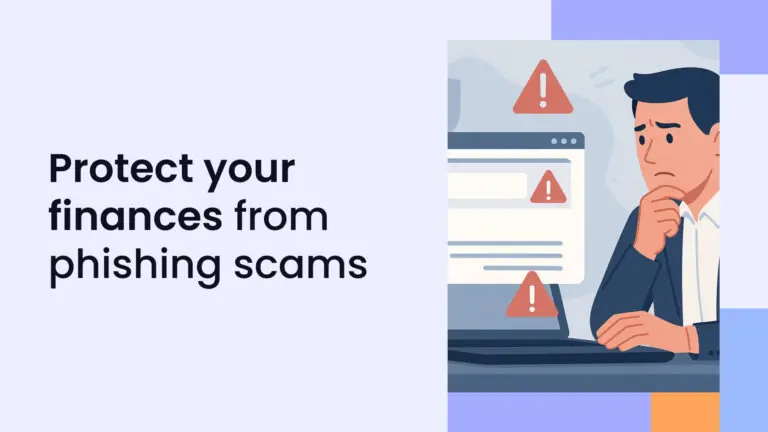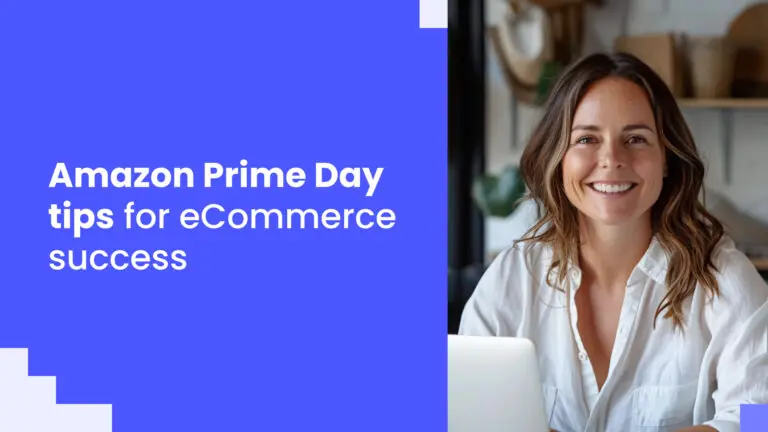Do you have an idea or invention that will change the world? Have you always dreamt of being your own boss? Perhaps you, like millions of others, have turned those dreams into a reality by starting your own business. You decided to take the plunge and logged on to a sellers platform, paid the fee, and set up your online store. Depending on your location, you also paid for the business licenses and incorporated your business’ name.
But now what? It’s one thing to create a prototype or sell to your neighbors, friends, and family, but once you’re out there on the world wide web, things get a bit more complicated. Whether selling online is a side hustle or it’s your plan for a primary source of income, you need to figure out how you are going to fund your new venture.
ECommerce startup funding is essential to kickstarting your business goals. Startups can be expensive and pulling that cash out of your pocket is not impossible, but can be difficult. Without the proper funding, you’ll struggle to acquire inventory, rent warehouse space, or pay employees. No matter how fast you aim to grow or what new products you plan to sell, any business requires startup funding. Scaling your business comes later, so let’s focus on this exciting transition into your new professional life.
In this article we’ll cover:
- What is considered an eCommerce startup?
- What is eCommerce Startup Funding?
- How much funding do you need?
- Types of eCommerce Startup Funding
- Bootstrapping
- Crowdfunding
- Savings
- Friends and family
- Grants
- Refinancing
- Credit cards
- Lines of credit (LOC)
- Angel investors
- Venture capital (VC)
- SBA loans
We’ll ask a few quick questions to better understand your specific business needs. Then, we’ll build a funding plan tailored to your expenses. - Funding for your eCommerce Business
What is Considered an ECommerce Startup?
ECommerce startup funding is designed to help you set up and manage your eCommerce business from day one.
ECommerce businesses are online businesses that buy and sell products or services through the internet. Startup businesses are in the beginning and early stages of development, usually no older than 3-5 years. Businesses in this stage usually focus on bringing a single product or service to the market. It isn’t until startups start the scaling process and begin to grow their business do they exit the “startup” stage and enter the scaling or growth stage.
Startups have unique needs while setting up their company and creating sustainable development over time. These days, it seems like anyone can pop online and create a business with a few clicks. What sets you apart from those other startups is whether you know how to ensure your business survives the economy and market changes.
You might be in it for the short game, to make a little extra money part time, or for the long haul to open yourself up to new opportunities and possibilities. Regardless, in order to get your product or service off the ground, you need funding.
What is ECommerce Startup Funding?
Subscribe to the eCommerce newsletter for
top industry insights
Any time you start a venture, you need capital to get things going. ECommerce startup funding allows you to gather the necessary equipment or inventory. Furthermore, you need to be able to finance the day-to-day operations. Marketing costs, paying for warehouse space, and platform hosting expenses add up fast, and you might soon find yourself in a cash flow crunch.
There are apps for everything these days to help you run your business on your own or with a minimal team, but subscriptions to these services can add up. It’s also wise to take the time to thoroughly investigate the market, create a business plan, analyze forecasts, and invest in user experience – not to mention setting up a professional website. All of these things cost money.
Even if you’re just dipping your toe into the eCommerce game, getting off the ground can push you into debt if you lack funding from day one. ECommerce startup funding is designed to be the solution to this common challenge. Plus, it should be accessible and flexible for your business needs. We’ll cover some of the creative ways to come up with extra cash to finance your eCommerce startup.
How Much Funding Do You Need?
As an eCommerce business owner, you have an advantage over brick-and-mortar stores in that you don’t need to pay for things like a physical storefront, office space, furniture, or utilities. However, there are still many costly factors that need to be considered when financing an eCommerce startup.
There are 13 major startup costs associated with eCommerce businesses:
- Equipment
- Inventory
- Marketing
- Advertising
- Website building
- Sellers’ platform fees
- Insurance
- Incorporation fees
- Taxes
- Distribution center or warehouse fees
- Packaging and shipping fees
- Payroll
- Consultants
As a new business owner, you might not have to pay all of the listed expenses. For example, if you plan to be a solopreneur and act as the only employee of your business, you can eliminate payroll. Additionally, you may choose to store your inventory in your garage or backyard shed for the time being until you scale your business and require more space. In addition, consultants can be incredibly expensive – after all they are paid to be experts at making you money – so you can attend free business class events or do your own research to save some cash. You can learn almost anything from YouTube these days.
However, there are costs you will not be able to negotiate out of including inventory acquisition expenses. If you sell a product, having an adequate amount of inventory available is a must, and many of these costs must be paid before you ever see sales revenue. You’ll also have to pay taxes, incorporation costs, and platform fees. If you are making or designing your product, you can’t get by without the right equipment. Then there are vital advertising and marketing expenses, shipping costs, and unexpected expenses that can pop up anytime.
The bottom line is, the average startup business costs between $3,000-5,000 up front. That’s a minimum of $3,000 on day one. For most of us, that’s a lot of quarters to dig out of the couch, and from there, your costs will only increase. Even if you can pay out of pocket, establishing eCommerce startup funding with certain loans may help you build business credit for the future so you can take out larger loans when it’s time to expand and scale your company.
Types of ECommerce Startup Funding
Funding comes in two different forms – debt and equity financing. Debt financing is the one the general population is most familiar with. It refers to taking out a loan and being indebted to the lender to make payments until the loan is repaid.
Equity financing on the other hand is not taking out debt, but receiving capital in exchange for partial or minority ownership in your company. That means the investor is taking the risk and joining you in your business venture. They are counting on the fact that your business will be successful and they will be able to make money in the future by collecting dividends, or part of your revenue, when you start making money.
Both debt and equity financing have their benefits when it comes to eCommerce startup funding, but it really depends on your goals, how fast you want to scale your business, and your ability to make repayments. So, as promised, here are your eCommerce startup funding options.
Bootstrapping
Bootstrapping is everyone’s favorite term when it comes to financing. Pull yourself up by your “bootstraps” and work hard to earn money that you can invest back into your business. This comes in the form of another stream of income such as a full or part-time job before you start selling online.
- Pros: You don’t owe anyone a dime from your business and you can say you did it all on your own. You can set a certain amount aside or slowly invest a bit at a time into your business. Everything is on your own time and in your own decision.
- Cons: Bootstrapping is a very common practice when starting a business, but it delays your ability to hit the ground running. If you need $3,000 for supplies or equipment, saving a little bit of your paycheck every week will take a long time to reach. Not to mention it takes around 2-3 years to turn revenue into income, so you will be reinvesting in your own business for a long time.
Crowdfunding
If you want money you won’t have to pay back, it can be easier to ask multiple people for smaller donations, rather than one person for a lot of money at one time. Crowdfunding platforms offer the opportunity for you to offer various monetary and non-monetary rewards for donations from people who are interested in investing in your startup.
- Pros: Multiple small donations or investments means you have the potential to reach your goal. You can offer prototypes of your product, coupons for when your inventory hits the market, or even partial ownership in your company (hello, equity crowdfunding). Rewards can be tiered, incentivizing higher donations for better rewards.
- Cons: Unfortunately, less than 25% of all crowdfunding campaigns are successful. Additionally, if you do not reach your goal by the end date, many crowdfunding platforms will allow donors or investors to retract their money. So if you do not receive full funding, you may be back at square one.
Savings
You worked hard and saved 10% of your paycheck for years. If you listen to personal finance experts, there is a checklist you should follow – including building up an emergency fund and a savings account. Once that savings reaches the amount you need for your startup, it’s open to use.
- Pros: Generally, you are not making much in interest by letting your money sit in a savings account. You might make a bit more by investing in a CD (certificate of deposit) or savings bond. But if your money is just sitting there, you can invest it into your startup to get the ball rolling and start generating revenue.
- Cons: You could be in trouble if your refrigerator stops working or you blow a tire on the way to work. If you pull your savings to start your business you may be putting yourself in a situation where you cannot make emergency expenses. Here’s a rule of thumb when it comes to savings and savings accounts: if you can’t pay for it twice, don’t pull it out of the account.
Friends and family
Not everyone has a rich uncle or an inheritance coming their way in the future. But most people have family members who want to see their dreams come to fruition. Asking for $100 here or $25 there adds up in the long run. In combination with bootstrapping, savings, and utilizing other funding methods, friends and family can be just what you need to get over the hump of starting your business.
- Pros: Family and friends want to see you succeed and many times will try to help you out as much as they can. Additionally, it might be easier to receive a loan or borrow money without worrying about interest and flexible repayment terms. Unlike a financial institution, people you know might not ask you for interest, and will likely let you pay back the money when you can instead of according to a rigid schedule.
- Cons: Borrowing money from family can get tricky. If you decide to take a large sum from someone you know, get the terms in writing. Notaries are inexpensive and a document that expressly lays out the conditions of the loan or gift will save you if there ends up being bad blood. In addition, not everyone has friends and family members with lots of cash to spare. There is likely a limit to the amount you can borrow.
Grants
The government and Small Business Administration offer grants specifically for startups and small businesses because they recognize that entrepreneurs are the backbone of the economy. The value of these grants ranges in amount and they often include a checklist of tasks you must complete in order to qualify. Grants can be hard to find and obtain, but if you do find a suitable grant, you don’t have to worry about paying back the money. This is a huge advantage when starting your business.
- Pros: If you manage to get a grant, you can obtain a significant amount of money that you don’t have to pay back. These grants are specifically for startups and small businesses so you are not competing against large corporations with extensive resources, raising your chances of success.
- Cons: Grants are both limited and highly sought after making them difficult and time consuming to obtain. Plus, in order to keep the grant once you have received it, there may be specific criteria you must meet. If you do not meet those goals, you may have to forfeit or return the money.
Refinancing
Those who own a home or personal assets that carry a high amount of value have a unique advantage – equity. If you have made payments on your assets and the value has increased since your initial purchase, there is money hiding in plain sight. Refinancing allows you to take out cash against your initial investment to use as you see fit.
- Pros: It’s your money, why not invest it in yourself? Refinancing offers you potentially large sums of cash up front from something you already own. If you refinance at the right time, you could lower your interest rate at the same time on your assets. Save money on interest while getting your startup funding – two birds, one stone.
- Cons: If you plan to take out a small amount (for example, you need $5,000 borrowed against your mortgage), you have to take into account what that $5,000 is going to cost you. Refinancing requires closing costs and a potential increase in interest rate. Don’t risk your personal assets for a worse deal on your initial purchase.
Credit Cards
Everyone knows about credit cards. Maybe your parents even warned you about them when you first started learning about finance growing up. But credit cards are a great source for immediate funding for qualifying applicants by providing an available, limited amount up front to use as you see fit.
Popular content
- 14 strategies to improve your eCommerce business’s financial health
- 50+ ChatGPT prompts to elevate your eCommerce business
- A guide to pricing your product on Amazon
- 5 marketing metrics all eCommerce businesses should track
- All about Amazon PPC
- Pros: Qualifying for credit cards is fairly simple and can be completed online. You can use personal credit if you do not have business credit. You are able to make point of sale purchases with a slide of your card and have access to your funds virtually anywhere. You can also take cash advances against your credit card if you need physical cash in your hands. And you don’t have to use the total available balance; you only repay what you owe.
- Cons: If you haven’t built up credit, you might struggle to qualify for a credit card. Plus, interest rates and APRs can be extremely high (usually around 20-24%). If you do not repay the total balance before interest accrues, you will owe up to a quarter of your total purchases on top of your balance. Having credit card discipline is essential so that you don’t accidentally find yourself down the slippery slope of credit card debt.
Line of Credit (LOC)
Lines of credit are half traditional loan, half credit card. Once you qualify for a line of credit, you receive a lump sum of capital in the account of your choice. Like credit cards, you only owe what you have taken out of the LOC. Every payment toward your balance becomes available to you in the credit line again for future use.
- Pros: With revolving credit, you can borrow and repay over and over without taking out new loans. Once you have decided to close the LOC, you can make the final payment balancing out the loan and have it removed. Money from the LOC can be transferred into your bank account so you have the freedom to use your debit card for point of sale transactions. Additionally LOCs tend to have lower interest and APR rates than credit cards.
- Cons: LOCs tend to have one main downfall, and that is they have higher interest rates than traditional fixed loans. Additionally, many LOCs have variable interest rates that can be difficult to predict your total amount owed per month. As with credit cards, if you have not yet built up your credit score, it can be difficult to qualify as well.
Angel Investors
Angel investors are wealthy individuals who are looking for startups and businesses to give their money to in exchange for equity. Essentially, angel investors are looking to make money off their initial investment. They receive equity in your business and will receive a portion of your revenue until they sell their shares back to you. As minority shareholders, angel investors may also want to participate in the management of your business, including playing a role in decision-making.
- Pros: You can receive a significant amount of capital up front. Whether this is a wealthy family member or a stranger with an open wallet, you can receive your investment to fund your startup without fixed monthly repayments and interest requirements.
- Cons: Angel investments are not gifts, but a financial agreement. The angel investor is financing your startup with the expectation that they will be repaid with a portion of your revenue. They are taking the risk that in the event your startup does not generate revenue, they don’t make any money either. You are still required to give them partial ownership. Angel investors could have partial say in your business in order to promote their own interest – collecting dividends.
Venture Capital (VC)
Like angel investors, venture capitalists are firms that set aside money to invest in startups and small businesses. Venture capitalists also expect to collect dividends from your revenue which gives them minority ownership in your business. Again, these investors will likely expect to have some say in your business decisions and functioning. That being said, venture capitalists tend to focus on a specific type of business, so they are able to share knowledge and expertise that may help your business succeed.
- Pros: Venture capitalists by nature have experience in startups and small businesses. VCs have the ability to pass knowledge and connections to you so you can ensure your business becomes profitable. As with angel investors, you have a partner (or minority owner) who accepts the risk that your business may not generate profit, but will help supply resources to prevent that from happening. You can obtain a large sum of money quickly, and you won’t have set monthly repayments.
- Cons: VCs will continue to collect dividends, like angel investors, until your business is no longer profitable or they sell their shares back to you. You now have to answer to someone else’s goals (making money for themselves), which could force you to grow faster than is sustainable. You will also lose some decision making power in order to cater to your investor.
SBA Loans
One of the most popular options when startups are looking for initial funding is through the Small Business Administration. As we mentioned previously, the SBA does offer some grants, but they can be difficult to obtain. As an alternative, the SBA provides loan options to help you get financing for your startup needs. You receive your loan amount and make fixed monthly repayments until you have paid the balance.
- Pros: You don’t need perfect credit to qualify for an SBA loan, but it helps with your approval amount and interest rates. The SBA also implements ceiling interest and APR rates so you don’t have to worry about being taken advantage of by credit companies. Finally, the SBA will offer longer term limits than traditional loans, allowing you more time to balance the loan.
- Cons: SBA loans are considered a last resort in some cases and you may be required to make a down payment as proof you can repay the loan. Additionally, their offer is final and is not influenced by the competitive nature of other financial institutions.
Funding for Your ECommerce Business
Once your eCommerce business has been bringing in revenue for some time and is no longer in the startup stage, you’ll need a different type of funding to move your business forward. You’ll also have more options once you have some revenue to show for all your hard work.
8fig is a different kind of growth partner for eCommerce sellers. Unlike other financing solutions, your funding is based on your business plan and cash flow. We pinpoint the stages at which you most need extra working capital and provide you with cash infusions to cover your needs. In addition, 8fig financing is flexible. You can change your funding plan and remittance schedule in real time to fit the natural fluctuations of your eCommerce business. We fund up to 90% of supply chain expenses, helping sellers grow their businesses up to 2.5 times faster.
Are you ready to find out how 8fig can help your business grow? Sign up for a Growth Plan today.
Subscribe to the eCommerce newsletter for
top industry insights
to our blog
Read the latest
from 8fig

Learn how to detect scams, avoid them, and report suspicious activity. What are phishing scams? Phishing scams are fake messages — usually emails or texts — that try to trick you into sharing personal or financial information by pretending to be a trusted company. They often look real, but their goal is to steal your […]

Amazon Prime Day is one of the biggest selling events of the year. Here’s how sellers can prepare for Prime Day and maximize their profits.

AI is quietly reshaping eCommerce. Karma’s Hadas Bar-Ad explores how today’s sellers are using intelligent tools to streamline operations, boost efficiency, and drive smarter growth.
